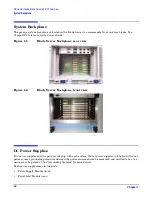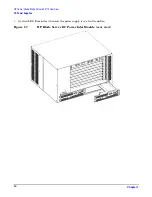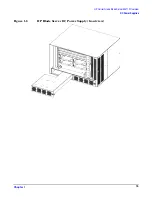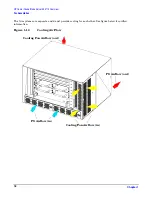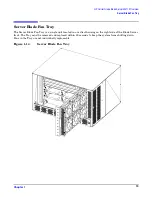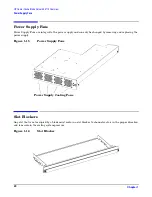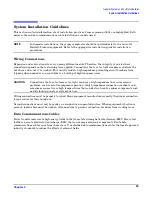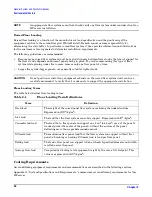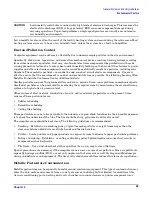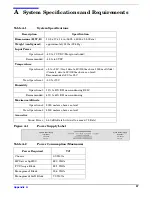
Chapter 2
General System and Facility Guidelines
Grounding Systems
26
Grounding Systems
Power Distribution Safety Grounding
The power distribution safety grounding system consists of connecting various points in the power
distribution system to earth ground using green (green/yellow) wire ground conductors. Having these ground
connections tied to metal chassis parts that may be touched by computer room personnel protects them
against shock hazard from current leakage and fault conditions.
Power distribution systems consist of several parts. Hewlett-Packard recommends that these parts be solidly
interconnected to provide an equipotential ground to all points.
Main Building Electrical Ground
The main electrical service entrance equipment should have an earth ground connection, as required by
applicable codes. Connections such as a grounding rod, building steel, or a conductive type service pipe
provide an earth ground.
Electrical Conduit Ground
All electrical conduits should be made of rigid metallic conduit that is securely connected together or bonded
to panels and electrical boxes, so as to provide a continuous grounding system.
Power Panel Ground
Each power panel should be grounded to the electrical service entrance with green (green/yellow) wire ground
conductors. The green (green/yellow) wire ground conductors should be sized per applicable codes (based on
circuit over current device ratings).
NOTE
The green wire ground conductor mentioned above might be a black wire marked with green
tape.
Computer Safety Ground
WARNING
When dual power sources are used, always measure voltage potentials. Failure to do
so can result in exposure of personnel to electric shock hazard and damage to the
equipment.
Ground all computer equipment with the green (green/yellow) wire included in the branch circuitry. The
green (green/yellow) wire ground conductors should be connected to the appropriate power panel and should
be sized per applicable codes (based on circuit over current device ratings).

